Introduction to CNC Machining for Titanium
Overview of Titanium: Characteristics and Benefits
Titanium is a remarkable metal with outstanding properties that make it highly desirable for various industries. Here are some key characteristics and benefits of titanium:
● High Strength: Titanium has an excellent strength-to-weight ratio, making it incredibly strong while being lightweight.
● Corrosion Resistance: Titanium is highly resistant to corrosion, even in harsh environments like seawater, acids, and chlorine.
● Heat Resistance: Titanium can maintain its strength and durability even when exposed to extremely high temperatures.
● Biocompatibility: Titanium is non-toxic and compatible with human biology, making it ideal for medical implants and devices.
● Lightweight: Titanium weighs around half as much as copper and slightly more than half of stainless steel, making it an excellent choice for applications where weight is a concern.
Some common applications of titanium include:
● Aerospace engineering (aircraft engines, airframes, rotors)
● Medical industry (surgical implants, instruments, wheelchairs)
● Automotive industry (engine components, suspension springs)
● Sports equipment (golf clubs, bike frames, baseball bats)
Importance of CNC Machining in Modern Manufacturing
CNC (Computer Numerical Control) machining plays a crucial role in modern manufacturing processes, particularly when working with materials like titanium. Here are some key reasons why CNC machining is important:
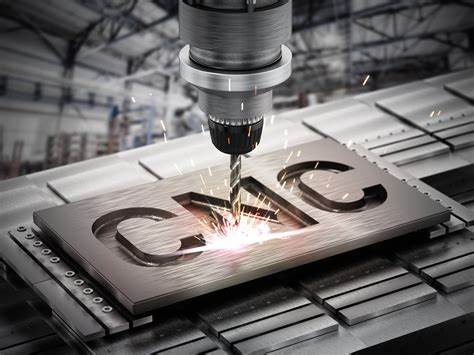
● Precision: CNC machines can produce parts with extremely high levels of accuracy and precision, ensuring consistent quality.
● Efficiency: CNC machines can operate continuously, reducing labor costs and increasing production output.
● Versatility: CNC machines can be programmed to produce a wide range of complex shapes and designs, enabling manufacturers to meet diverse product requirements.
● Repeatability: CNC programs can be stored and reused, allowing for consistent and repeatable production of parts.
In the case of titanium, CNC machining is often the preferred manufacturing technique due to the following reasons:
● Titanium is difficult to cast or mold effectively due to its high melting point and reactivity with oxygen.
● CNC machining provides the accuracy and precision required for producing high-quality titanium parts.
● It allows for the creation of intricate shapes and designs that would be challenging to achieve through other manufacturing methods.
Understanding Titanium Alloys
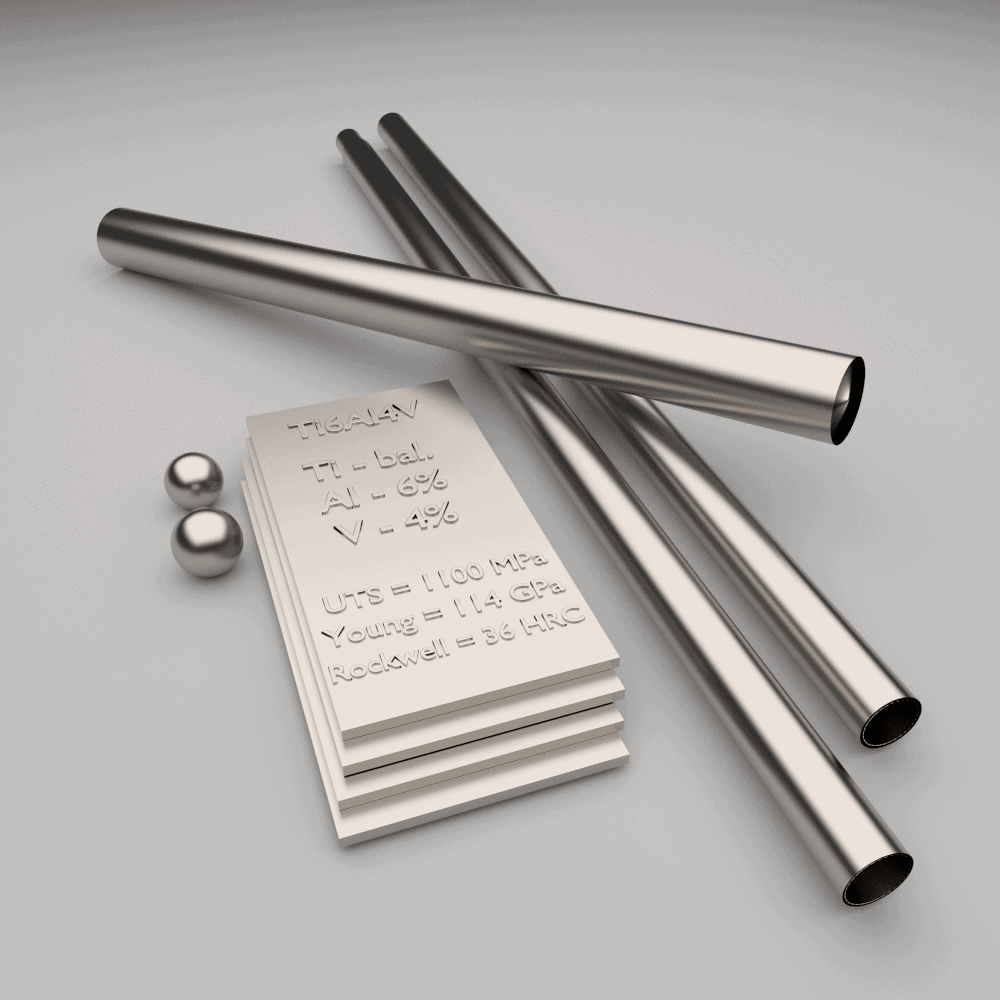
Classification of Titanium Alloys
Titanium alloys can be broadly classified into three categories:
● Pure Titanium: This refers to titanium with no added alloying elements. Pure titanium is relatively soft and easy to machine.
● Alpha Alloys: These alloys contain alloying elements like aluminum, oxygen, and nitrogen. They are stronger than pure titanium but less ductile.
● Beta Alloys: These alloys contain alloying elements like molybdenum, iron, vanadium, chromium, and manganese. They are more ductile and can be heat-treated to increase strength.
Properties of Pure Titanium
Pure titanium, also known as commercially pure (CP) titanium, has the following properties:
● Excellent Corrosion Resistance: Pure titanium is highly resistant to corrosion, even in harsh environments.
● Good Formability: Pure titanium is relatively soft and ductile, making it easy to form and machine.
● Moderate Strength: While not as strong as titanium alloys, pure titanium still has good strength compared to other metals.
Common grades of pure titanium include Grade 1 (low oxygen content), Grade 2 (standard oxygen content), Grade 3 (medium oxygen content), and Grade 4 (high oxygen content).
Characteristics of Alpha and Beta Titanium Alloys
Alpha Titanium Alloys:
● Contain aluminum and tin as primary alloying elements
● Have good strength and creep resistance at high temperatures
● Less ductile than beta alloys
● Example: Ti-5Al-2.5Sn (Grade 6)
Beta Titanium Alloys:
● Contain elements like vanadium, molybdenum, and iron
● More ductile and formable than alpha alloys
● Can be heat-treated to increase strength
● Example: Ti-6Al-4V (Grade 5)
The Different Grades of Titanium
Grade | Alloy/CP | Strength | Formability | Machinability | Typical Applications |
1 | CP | Lowest | Excellent | High | Chemical processing, medical |
2 | CP | Low | High | Moderate | Aerospace, marine |
3 | CP | Medium | Moderate | Low | Airframes, cryogenics |
4 | CP | High | Low | Very Low | Aerospace, industrial |
5 | Ti6Al4V | Very High | Moderate | Low | Aerospace, medical implants |
6 | Ti5Al2.5Sn | High | Moderate | Moderate | Aerospace, engine parts |
7 | Ti-0.15Pd | Low | High | High | Chemical processing |
11 | Ti-0.15Pd | Low | High | High | Desalination, chemical processing |
12 | Ti-0.3Mo-0.8Ni | High | Moderate | Moderate | Marine, chemical systems |
23 | Ti6Al4V ELI | High | High | Low | Orthopedic and dental implants |
Choosing the Right Titanium Alloy for Machining
When choosing a titanium alloy for machining, consider the following factors:
● Strength Requirements: If high strength is needed, choose a beta alloy like Ti-6Al-4V (Grade 5).
● Formability: For applications requiring high formability, pure titanium (Grades 1-4) or alpha-beta alloys like Ti-6Al-4V (Grade 5) are good choices.
● Machinability: Pure titanium (Grades 1-2) and some alpha alloys are easier to machine than beta alloys.
● Corrosion Resistance: For highly corrosive environments, pure titanium (Grades 1-4) or beta alloys like Ti-0.3Mo-0.8Ni (Grade 12) are recommended.
● Cost: Pure titanium and alpha alloys are generally less expensive than beta alloys.
Advantages and Disadvantages of Using Titanium
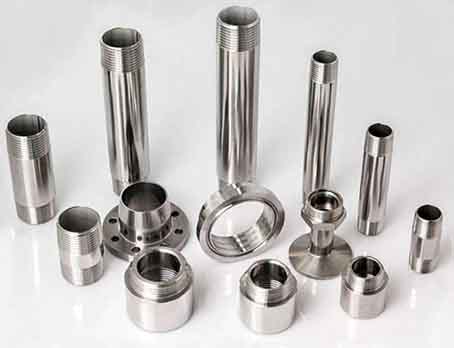
Why Choose Titanium: Advantages
Titanium has several advantages that make it an attractive choice for various applications:
● High Strength-to-Weight Ratio: Titanium is incredibly strong while being lightweight, weighing about half as much as copper.
● Excellent Corrosion Resistance: Titanium is highly resistant to corrosion, even from substances like seawater, chlorine, and acids.
● Heat Resistance: Titanium can maintain its strength and durability at extremely high temperatures.
● Biocompatibility: Titanium is non-toxic and compatible with human biology, making it ideal for medical implants and devices.
● Machinability: Despite its challenges, titanium can be machined using the right techniques and tools.
● Recyclable: Titanium is recyclable, making it an environmentally friendly choice.
Challenges in Machining Titanium: Disadvantages
While titanium offers many benefits, it also presents several challenges during machining:
● Heat Buildup: Titanium has low thermal conductivity, causing heat to accumulate at the cutting tool, leading to rapid tool wear.
● Galling: Titanium can adhere to the cutting tool, a phenomenon known as galling, which can damage the tool and the workpiece.
● Chatter and Vibration: Titanium's low modulus of elasticity can cause severe chatter and vibration during machining, affecting surface quality.
● Work Hardening: Titanium can work-harden during machining, becoming harder and more abrasive, further increasing tool wear.
● Cost: Titanium is an expensive material compared to other metals like aluminum or steel.
Comparing Titanium with Other Metals
Titanium vs. Steel:
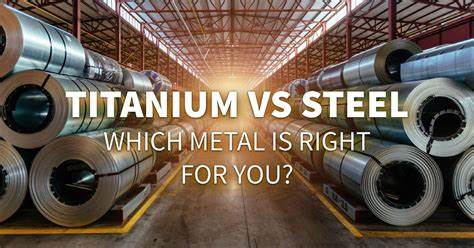
● Titanium is lighter and more corrosion-resistant than steel.
● Steel is generally cheaper and easier to machine than titanium.
● Titanium has a higher strength-to-weight ratio than steel.
Titanium vs. Aluminum:
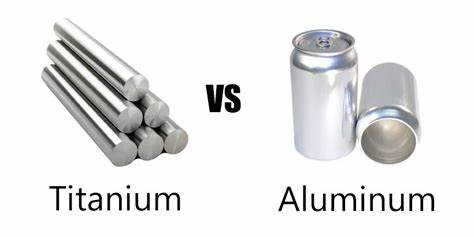
● Titanium is stronger and more heat-resistant than aluminum.
● Aluminum is less expensive and easier to machine than titanium.
● Titanium has a higher strength-to-weight ratio than aluminum.
While titanium offers superior properties, its challenges and cost often make it a choice for applications where its advantages outweigh the drawbacks, such as in aerospace, medical, and high-performance industries.
The Challenges of Machining Titanium
Understanding Titanium's Chemical Reactivity and Galling Issues
Titanium is a highly reactive metal. It can react with gases during machining, leading to problems like surface oxidation and embrittlement. This can weaken the components and reduce their corrosion resistance.
Titanium also has a low modulus of elasticity compared to its high strength. This makes it a "gummy" material to machine. Titanium can adhere to the cutting tool, causing tool failure and damage. This is known as galling.
Galling also affects the surface finish quality of the machined titanium parts.
Managing Heat Buildup and Cutting Forces During Machining
Keeping the temperature cool during machining is a major challenge with titanium. Titanium has low thermal conductivity, which causes heat buildup at the cutting tool location. This leads to rapid tool wear and can negatively impact the quality of the cut surfaces.
Harder titanium alloys require even more care. Larger chip loads and lower RPM on the CNC machine are recommended. Using a high-pressure coolant can also help the cutting tools work better and produce higher quality titanium parts.
Titanium alloys also require high cutting forces, which makes them difficult to cut. These forces can cause:
● Rapid tool wear
● Faulty parts
● High vibration, impacting product quality and surface finish
Addressing Residual Stresses and Material Hardening
Titanium alloys have a crystal structure that makes them less flexible. This can increase cutting forces during machining, reducing machinability.
The crystal structure can also lead to residual stresses in the workpiece. These stresses can cause:
● Warping or twisting of the part
● Cracking
● Reduced part lifespan
Titanium's low flexibility also contributes to strain hardening during machining. As the material is cut, it becomes harder and more abrasive to the cutting tools.
Machining Process for Titanium
Overview of Titanium Machining Challenges
Titanium is a tough material to work with. It has a combination of properties that make conventional machining methods ineffective. Understanding these challenges is important for finding solutions to produce high-quality machined titanium parts.
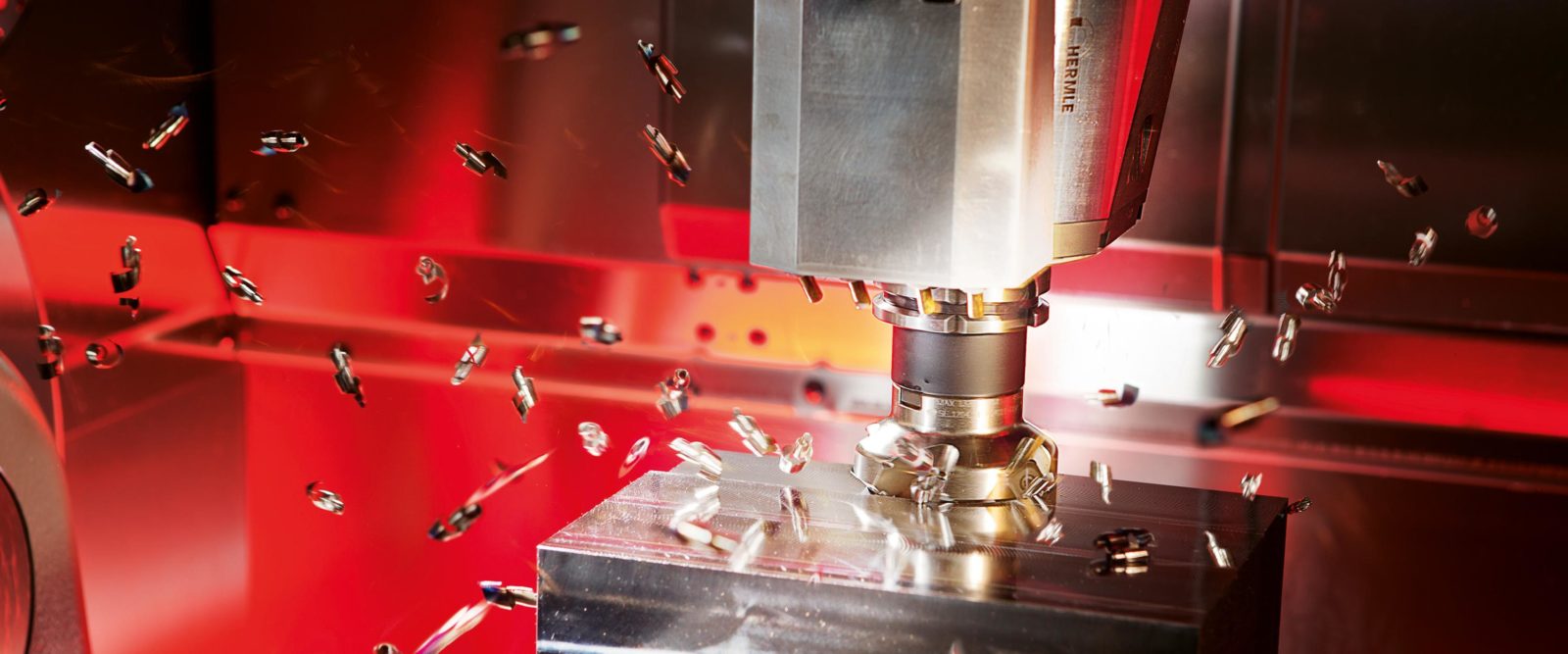
● Heat Accumulation: Titanium's low thermal conductivity causes rapid heat buildup at the tool location. This increases tool wear and hardens the titanium further, exacerbating the problem.
● "Gummy" Material: Titanium's low modulus of elasticity compared to its high strength makes it a "gummy" material. It can adhere to the cutting tool, causing tool failure and poor surface finish.
● Chatter and Springback: Titanium's elasticity can cause workpiece vibration (chatter) and springback at the cut location, creating poor machining conditions and compromising tolerances.
Selecting the Right Cutting Tools for Titanium
Choosing the right cutting tool is crucial for machining titanium. Coated high-speed steel tools, made of tungsten, carbon, and vanadium, can maintain hardness up to 600°C. They allow deeper cuts and reduce chipped edges.
As titanium's popularity grows, tool manufacturers are developing specialized solutions:
● Coatings: Heat-resistant coatings like titanium aluminum nitride (TiAlN) or titanium carbo-nitride (TiCN) can extend tool life.
● Uneven Cutting Edges: Uneven spacing between cutting edges helps disrupt chatter.
Use high-quality titanium-specific tools and replace dull tools frequently. Consider smaller diameter tools with more cutting edges to maintain metal removal rates while reducing heat buildup.
The Role of Tool Coating in Enhancing Performance
Tool coatings can greatly improve a tool's ability to withstand the heat generated when machining titanium. TiAlN (titanium aluminum nitride) is a suitable coating that:
● Provides lubricity to combat built-up edges, galling, and chip welding.
● Is well-suited for the high temperatures experienced when machining titanium.
Importance of Stable Surface and Minimizing Chatter
Titanium is prone to causing tool chatter (vibration), so reducing vibration is crucial. Secure the workpiece firmly to prevent deflection. Use high-quality CNC machines with extremely rigid tooling setups. Consider using shorter cutting tools to reduce tool deflection.
Climb Milling vs. Conventional Milling for Titanium
Conventional Milling: In this traditional method, chip width starts thin and increases, putting more heat into the workpiece and increasing strain hardening.
Climb Milling: Chip width starts high and decreases, promoting heat transfer to the chip instead of the workpiece. It also creates a cleaner shear and pulls chips behind the cutter, preventing interference.
Climb milling is a useful strategy to keep chips in check when machining titanium.
Titanium Machining Tips
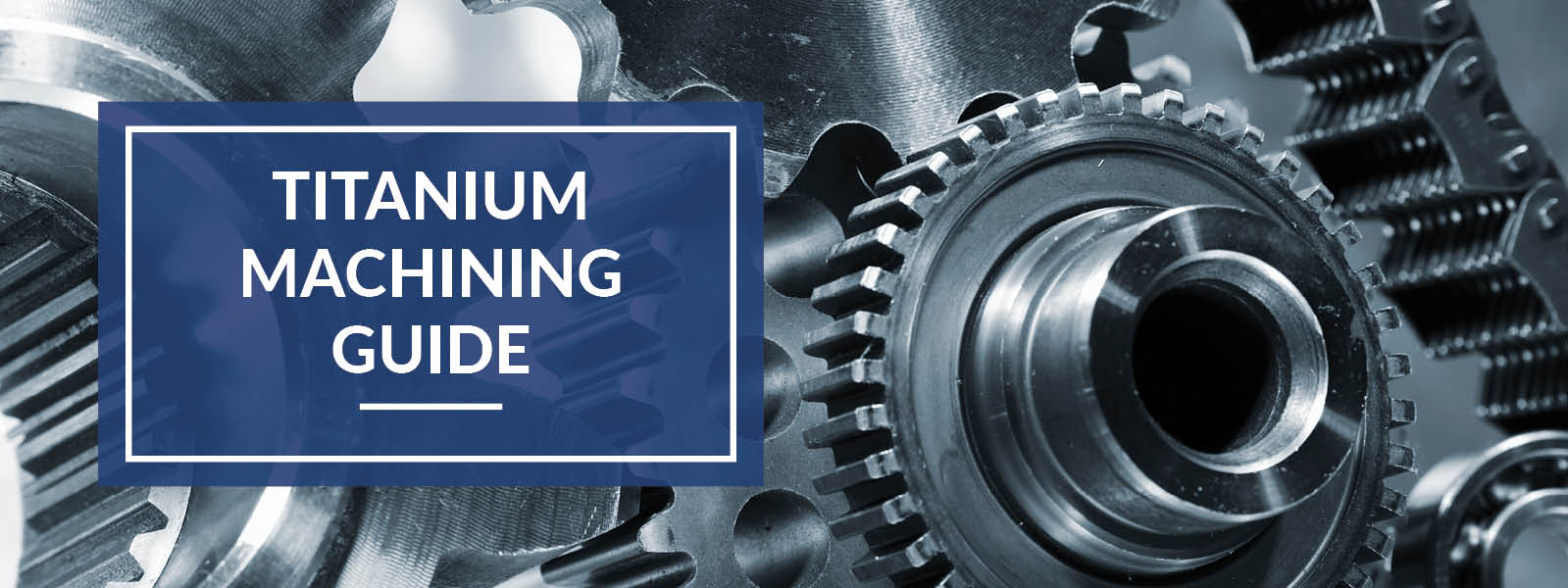
Managing Heat: Strategies to Keep Temperatures Down
Keeping the temperature down is crucial when machining titanium. Since titanium doesn't conduct heat well, most of the energy goes into the cutting tool. This heat can cause:
● Premature tool failure
● Dulling of tools and more rubbing, generating even more heat
● Fire risk with some materials
Use generous amounts of coolant to bring down temperatures. A high-pressure cooling system that blasts the work area and tool with 10% concentrated coolant works well. Increasing coolant concentration may also help.
Ensuring Stability for Better Machining Outcomes
Exposing your tools to shock and jarring forces adds extra strain, leading to quicker wear. Avoid inserting the tool directly into the titanium. Instead:
● Gently arc the tool inward to ease it into the cut
● Follow thick-to-thin milling in the same direction (clockwise or counterclockwise) as the tool
At the end of the cut, use a chamfer (sloped groove). This lets the tool gradually lose depth, easing the transition with less force.
Tool Maintenance: Keeping Your Tools Sharp and Effective
Sharp tools are necessary for efficient titanium cutting. However, titanium can quickly dull your tools. Inspect them regularly and replace any showing signs of wear.
A dull tool will generate more heat and wear out even faster, compounding the issue.
Techniques to Minimize Galling and Chipping
Galling: Titanium readily alloys with other materials, causing galling and rewelding of edges during cutting. Keeping heat down, using sharp tools, and lubricants can reduce this.
Chipping: When metal pieces being cut off compress and adhere to the cutting edge, it's called chipping. More buildup impacts performance and can severely damage the tool.
Sharp tools and lubricants also help minimize chipping during titanium machining.
Machining Challenges and Solutions
Heat Management During Machining
One of the biggest challenges when machining titanium is keeping everything cool. Titanium's low thermal conductivity causes rapid heat buildup at the tool location.
Role of Coolant
An obvious solution to excessive heat is using more coolant. Blasting the work zone and tool with 10% concentrated coolant will keep the contact area cool. It will also wash away any heat-carrying chips.
High-Pressure Coolant Techniques
For turning applications, the position and pressure of the coolant are crucial. With the right application, much higher surface speeds and metal removal rates can be achieved.
However, high-pressure coolant can sometimes cause material redeposition onto the part's surface. This can be overcome by planning the cutting strategy and reducing coolant pressure for the final finish cuts.
Preventing Work Hardening
Titanium is prone to work hardening. As the material is cut, it becomes harder and more abrasive to the tooling.
Importance of Constant Feed
Maintaining a constant feed rate ensures that cutting work-hardened material is kept to a minimum. This prevents further work hardening and excessive tool wear.
Adjusting the Feed Rate
If possible, increasing the feed rate can be beneficial. It means the tool spends less time in a specific area, allowing less heat buildup and work hardening at the cutting edge.
Tooling Considerations for Titanium
Selecting the Right Tools
Carbide-tipped tools with a PVD coating are best suited for cutting titanium. Newer coatings like TiAlN (titanium aluminum nitride) are also available.
Titanium is a relatively springy material, so a sharp tool is absolutely critical. Blunt tools will rub the surface and cause chatter.
Tool Coating and Maintenance
Coatings like TiAlN improve a tool's ability to withstand the high heat when machining titanium. They provide lubricity and are well-suited for high temperatures.
Regular tool inspection and replacement of dull tools is necessary, as dull tools generate more heat and wear out faster.
Effective Chip Control Strategies
Titanium can produce long chips that can easily damage tooling and mark the workpiece surface. Long, thin chips also do not assist with transferring heat away from the work zone.
Using tooling and tool paths that create smaller, thicker chips is ideal when machining titanium. Proper chip control is essential.
Workholding Solutions for Precision and Safety
Secure workholding is critical when machining titanium. It removes vibration from the process, allowing better cutting data.
Many titanium parts have thin sections, so using custom workholding solutions for final operations yields better results. It often allows greater access and support for the component.
Tool Path Optimization for Efficient Machining
Choosing the right tool path is as important as selecting the correct tool when machining titanium.
Tool paths that ensure constant cutter engagement in the workpiece are necessary. For example, a trochoidal pattern when cutting a slot reduces the time any one flute is engaged, limiting heat buildup.
Arcing the tool into and out of the workpiece reduces shock and abrupt motions that can severely damage tools.
Surface Finishing Techniques for Titanium Parts
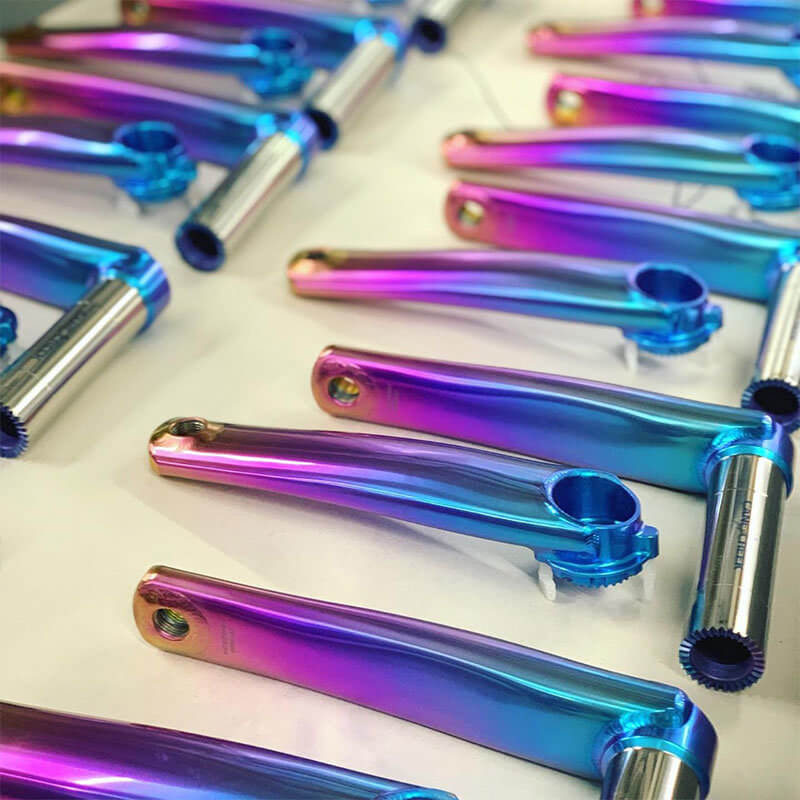
A Guide to Polishing, Anodizing, and Chroming
After CNC machining, titanium parts can be improved with various surface finishing treatments. These treatments can serve functional or aesthetic purposes.
Polishing is a common surface finishing technique. It helps to smoothen and enhance the appearance of titanium parts.
Anodizing is an electrochemical process that creates a durable, decorative oxide coating on the titanium surface. It improves corrosion and wear resistance.
Chroming involves depositing a thin layer of chromium onto the titanium part. It enhances surface characteristics like appearance, hardness, and corrosion resistance.
Understanding Powder Coating, PVD Coating, and Brushing
Powder Coating is a dry finishing process where a charged powder is applied and then cured under heat. It offers excellent durability and corrosion protection for titanium parts.
PVD (Physical Vapor Deposition) Coating is a vacuum deposition process that creates very thin, hard coatings on titanium parts. PVD coatings improve properties like wear and corrosion resistance.
Brushing is a simple mechanical process of creating patterns or textures on the titanium surface using abrasive filaments. It can produce attractive finishes like hairline or circular brush patterns.
These surface treatments allow titanium's properties to be tailored for specific functional requirements or desired aesthetic effects in various applications.
The Diverse Applications of CNC Machined Titanium Parts
Titanium in Aerospace: Beyond the Basics
Titanium is widely used in the aerospace industry due to its exceptional properties. It has a high strength-to-weight ratio, outstanding corrosion resistance, and can withstand extremely hot environments.
In aerospace, CNC machined titanium parts include:
● Aircraft engine components like turbine blades and compressor parts
● Airframe structures and components
● Rotors and shafts
Titanium drives aircraft production - about two-thirds of global titanium supply goes into aircraft engines and airframes.
Marine and Naval Applications: Durability Under the Sea
Compared to most metals, titanium has superior corrosion resistance. This makes it perfect for withstanding the harsh seawater environment in marine applications.
Titanium marine parts include:
● Propeller shafts
● Underwater robotics components
● Rigging equipment
● Ball valves
● Marine heat exchangers
● Fire system piping
● Pumps
● Exhaust stack liners
● Onboard cooling systems
The Role of Titanium in Automotive Innovation
While aluminum dominates the automotive sector, titanium's exceptional properties make it suitable for certain automotive parts:
● Engine valves and valve springs
● Retainers
● Suspension springs
● Brake calipers and pistons
● Connecting rods
● Piston pins
● Engine rockers
Titanium improves performance while reducing weight in these components.
Titanium's Impact on Medical and Dental Fields
Titanium's biocompatibility, corrosion resistance, and low electrical conductivity make it vital for medical applications. Its physiological pH values promote osseointegration (bone-implant bonding).
Common medical titanium parts include:
● Orthopedic implants (hip, knee)
● Bone plates and screws
● Spinal fixation rods, plates, connectors
● Dental implants, bridges, crowns
● Surgical instruments
Titanium's properties allow it to be used inside the human body, impacting lives daily.
Partnering with TeamMfg for Titanium Machining
TeamMfg's Advanced Titanium Machining Capabilities
TeamMfg stands out in the precision machining industry with its state-of-the-art technology and profound expertise, particularly in the realm of CNC machining titanium. The company's advanced machining capabilities are designed to tackle the unique challenges presented by titanium's properties, ensuring precision, efficiency, and quality in every component produced.
The foundation of TeamMfg's success in titanium machining lies in its adoption of cutting-edge equipment and techniques. Equipped with 5-axis CNC machines, TeamMfg can perform complex cuts and intricate details on titanium parts with unmatched accuracy. This capability is crucial for industries requiring high precision components, such as aerospace and medical devices.
Furthermore, TeamMfg's commitment to innovation extends to its tooling and programming strategies, specifically tailored for titanium machining. By selecting high-quality tools and optimizing machining parameters, TeamMfg minimizes common issues such as tool wear and material deformation, ensuring a seamless manufacturing process from start to finish. Contact Us today!
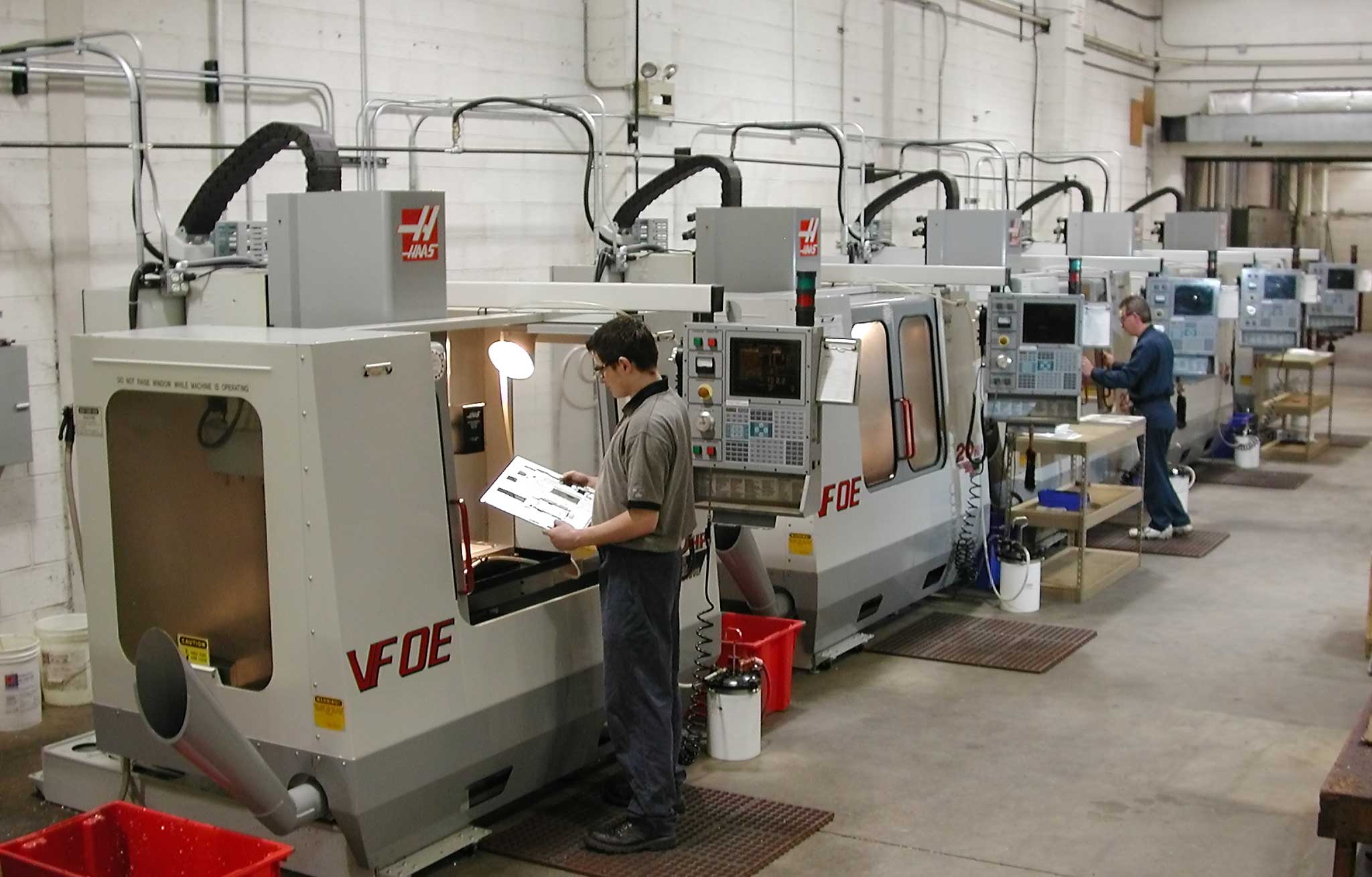
Success Stories: Transforming Ideas into Reality
TeamMfg's portfolio of success stories reflects the diversity and complexity of projects that the company has undertaken. One notable example includes the production of aerospace-grade titanium components, where TeamMfg's expertise significantly reduced production time and costs while maintaining strict aerospace standards.
Another success story highlights TeamMfg's role in the medical industry, where the company's precision machining services facilitated the creation of advanced titanium medical implants. These implants, known for their biocompatibility and durability, have enhanced patient outcomes and further established TeamMfg as a trusted partner in medical manufacturing.
These success stories demonstrate not only TeamMfg's technical abilities but also its commitment to customer satisfaction and project success. By collaborating closely with clients, understanding their unique needs, and leveraging its advanced machining capabilities, TeamMfg has helped numerous businesses transform their innovative ideas into tangible, high-quality titanium parts.
Partnering with TeamMfg for titanium machining means more than just accessing superior machining services; it's about joining forces with a dedicated ally committed to pushing the boundaries of manufacturing excellence. Whether you're in the aerospace, automotive, medical, or marine industry, TeamMfg's tailored solutions and unwavering support will ensure your titanium machining projects are successful, on time, and within budget.
Conclusion
Summarizing the Key Points on CNC Machining Titanium
Titanium is an exceptional material with a remarkable combination of properties like high strength, lightweight, corrosion resistance, and ability to withstand extreme temperatures. However, these same qualities that make it so desirable also create significant challenges when machining titanium parts.
Overcoming issues like rapid heat buildup, galling, chatter, and work hardening requires carefully controlling factors like:
● Using optimized cutting tools and coatings designed for titanium
● Maintaining rigid and stable setups to minimize vibration
● Adjusting cutting parameters like feed rates and applying high-pressure coolant
● Implementing strategies like climb milling for better chip control
Mastering these techniques allows manufacturers to unlock titanium's full potential across diverse industries.
The Future of Titanium in CNC Machining and Industry Applications
As manufacturing technologies continue advancing, we can expect to see titanium used more widely across multiple sectors. Improvements in CNC machining capabilities, additive manufacturing processes for titanium, and new titanium alloy developments will drive this expansion.
Aerospace will remain a major driver of titanium demand. But we will also witness growing titanium applications in automotive, energy, consumer goods, and especially the medical field due to its biocompatibility.
With the right expertise and cutting-edge equipment, manufacturers can overcome titanium machining challenges. This will unlock new opportunities to leverage this exceptional metal's properties in innovative products that were previously impossible or uneconomical to produce.
FAQs for CNC Machining Titanium
Q: How does the choice of coolant affect titanium machining?
A: Coolant choice is crucial. High-pressure, 10% concentrated coolant cools the tool. Proper coolant prevents overheating, prolonging tool life.
Q: What are the most common problems encountered when machining titanium?
A: Common issues include heat buildup, galling, chatter, and work hardening. These challenges require specialized techniques to overcome.
Q: Can I use standard tools for machining titanium?
A: No, standard tools are ineffective. Use coated carbide tools designed specifically for titanium to prevent premature wear.
Q: What makes titanium different from other metals in machining?
A: Titanium's low thermal conductivity leads to concentrated heat buildup. Its low modulus makes it "gummy" and prone to chatter.
Q: How does the heat resistance of titanium affect its machining process?
A: Titanium's heat resistance leads to higher cutting forces required. Proper cooling and optimized parameters are necessary.
Q: What are the benefits of using climb milling over conventional milling for titanium?
A: Climb milling promotes heat transfer to chips instead of workpiece. It also reduces rubbing for better surface finish.
Q: How can I prevent tool wear and failure when machining titanium?
A: Use appropriate coatings like TiAlN and replace dull tools regularly. Stable setups and optimized parameters also reduce wear.
Q: What are the most common applications for machined titanium parts?
A: Aerospace, medical, automotive, and marine industries utilize machined titanium for its strength, biocompatibility, and corrosion resistance.


















